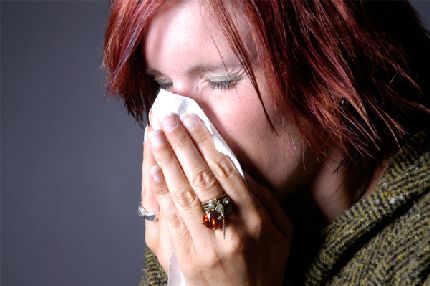Etymology: Common Name: Brand: Treatment of infections caused by certain bacteria. It can also be used for other conditions as determined by your doctor. Azithromycin macrolide antibiotics. It slows the growth and sometimes killing, sensitive bacteria by reducing the production of important proteins needed for bacteria to survive. you are allergic to any ingredient in Azithromycin, other macrolide antibiotics (eg erythromycin), ketolide antibiotics or (eg, telithromycin)
you have a history of liver or yellowing of the skin or eyes caused by any doseform (for example, tablets , suspension, injection) azithromycin
you are taking cisapride, dofetilide, dronedarone, nilotinib, pimozide, propafenone, or tetrabenazinom
Contact your doctor or health care provider right away if any of these apply to you. Some medical conditions may interact with azithromycin. Tell your doctor or pharmacist if you have any disease, especially if any of the following apply to you:
, if you are pregnant, planning to become pregnant or are breast-feeding
, if you are taking any prescription or sold over the counter medicine, herbal preparation, or dietary supplement >> << if you have allergies to medicines, foods or other substances
if you have liver or kidney, myasthenia gravis, or irregular heart rhythms
Some medication can interact with azithromycin. Tell your doctor if you are taking any other medicines, especially any the following:
antiarrhythmic drugs (eg disopyramide, dofetilide, dronedarone, propafenone), arsenic, astemizole, beprydyl, chloroquine, cisapride, dolasetron, domperidone , droperidol, halofantrine, haloperidol, inhibitors of histone dezatsetilazy (eg, romidepsin), lithium, maprotylin, methadone, paliperydonu, pentamidine, phenothiazines (eg, thioridazine), pimozide, quinolones antibiotics (eg levofloxacin) terfenadin, tetrabenazinom, toremifene, tricyclic antidepressants (eg amitriptyline), vandetanib or ziprasidon because the risk of heart problems, including heart rhythm disturbances, may be increased
ryfamitsyniv (eg, rifampin) because the risk of their side effects may be increased by Azithromycin or they may reduce the effectiveness of azithromycin in
anticoagulants (eg warfarin), carbamazepine, cyclosporine, digoxin, ergot (eg, ergotamine), nilotinib, phenytoin, theophylline, triazole, or inhibitors of receptor tyrosine kinase (eg dazatinib), so the risk of their side effects may be increased by Azithromycin
This may not be the complete list of all interactions that may occur. Ask your health care provider if Azithromycin may interact with order strattera other medications you are taking. Consult your doctor before you start, stop, or change the dose of any medicine. Use of azithromycin as directed by your doctor. Check the label on the medicine for exact dosing instructions. Azithromycin, usually by injection at the office of a doctor, hospital or clinic. If you use Azithromycin home health care provider will teach you how to use it. Make sure you understand how to use azithromycin. Follow the procedures you are taught using the dose. Contact your doctor if you have any questions. Do not use Azithromycin if it contains particles, is cloudy or discolored, or if the bubble is broken or damaged. Keep this product, as well as syringes and needles, out of reach of children and pets. Do not use needles, syringes and other materials. Ask your doctor how to dispose of these materials after use. Follow all local rules for disposal. To clear your infection completely, use Azithromycin for the full course of treatment. Keep using it even if you feel better within a few days. If you miss a dose of azithromycin, use it as soon as possible. If it is almost time for your next dose, skip the missed dose and go back to your regular dosing list. Do not use 2 doses at once. Ask your health care provider any questions you may have about using azithromycin. Azithromycin may cause drowsiness, dizziness, blurred vision or dizziness. These effects may be worse if you take it with alcohol or certain medicines. Use of azithromycin with caution. Do not move or perform other possibly unsafe tasks until you know how you react to it. Azithromycin may cause you to become tanned easily. Avoid the sun, ultraviolet lamps, or tanning booths until you know how you react to azithromycin. Use a sunscreen or wear protective clothing if you must be outside a short time. Mild diarrhea usually with the use of antibiotics. However, a more serious form of diarrhea (pseudomembranous colitis) may rarely occur. It can develop when using antibiotic or within several months after stopping its use. Contact your doctor if stomach pain or cramps, severe diarrhea, or bloody or watery stools occur. Do not treat diarrhea without first checking with your doctor. Tell your doctor or dentist that you take Azithromycin before you receive any medical or dental care, emergency care, or surgery. Severe and sometimes fatal liver problems have been reported with azithromycin. Immediately consult a doctor if symptoms of hepatic dysfunction (eg, yellowing of the skin and whites of the eyes, dark urine, pale stools, severe or persistent nausea, vomiting, loss of appetite, unusual itching). Discuss any questions or problems with your doctor. Long-term or repeated use of azithromycin may lead to secondary infection. Tell your doctor if there were signs of secondary infection occurs. Your medicine may need to change this attitude. Be sure to use Azithromycin for the full course of treatment. If you do not, medicine may not clear your infection completely. Bacteria may become less sensitive to this or other medicines. This can make infections harder to treat in the future. Azithromycin only works against bacteria, it does not treat viral infections (eg colds). Azithromycin should be used with caution in children younger than 16 years of safety and effectiveness in these children have not been confirmed. Pregnancy and breast-feeding: If you become pregnant, contact your doctor. You will need to discuss the benefits and risks of using azithromycin while you are pregnant. It is not known if azithromycin is in breast milk. If you are or will be breastfeeding while using azithromycin, consult your doctor. Discuss any possible risks to your baby. All medicines may cause side effects, but many people have no, or junior, side effects. Diarrhea or loose stools, headache, mild abdominal pain, nausea, upset stomach, vomiting. Severe allergic reactions (rash, hives, itching, difficulty breathing or swallowing, tightness in the chest, swelling of the mouth, face, lips, throat or tongue, unusual hoarseness, shortness of breath), bloody or watery stools, changes in hearing or hearing loss, chest pain, eye or vision problems, irregular heartbeat, muscle weakness, pain and inflammation at the injection site, chest pounding, red, swollen, blisters, or peeling skin, ringing in the ears, seizure, severe or persistent diarrhea, abdominal cramps or pain, symptoms of liver problems (eg, yellowing of the skin and whites of the eyes, dark urine, pale stools, severe or persistent nausea, vomiting, loss of appetite, unusual itching), problems with speech or swallowing, unusual vaginal itching , odor or discharge. This is not a complete list of all side effects that may occur. If you have questions about side effects, contact your doctor. Ask your doctor for medical advice about side effects. To report adverse events to the appropriate agency, please read. Contact 1-800-222-1222 (the American Association of Centers for Control of poison), your local or emergency room immediately. Symptoms may include diarrhea, nausea, upset stomach, vomiting. Proper storage of Azithromycin: Azithromycin is generally processed and stored by a doctor. If you are using Azithromycin at home, store Azithromycin as directed by your pharmacist or health care provider. Keep Azithromycin out of reach of children and away from pets. If you have questions about Azithromycin, please talk to your doctor, pharmacist or other health care provider. Azithromycin should be used only patient for whom it is prescribed. Do not share it with others. Do not use Azithromycin for other health conditions. If symptoms do not improve within a few days or if they become worse, consult your doctor. Consult your pharmacist about how to get rid of unused medication. This information is summary only. It does not contain all information about azithromycin. If you have questions about the medicine you are taking or would like more information, check with your doctor, pharmacist or other health care provider. .





